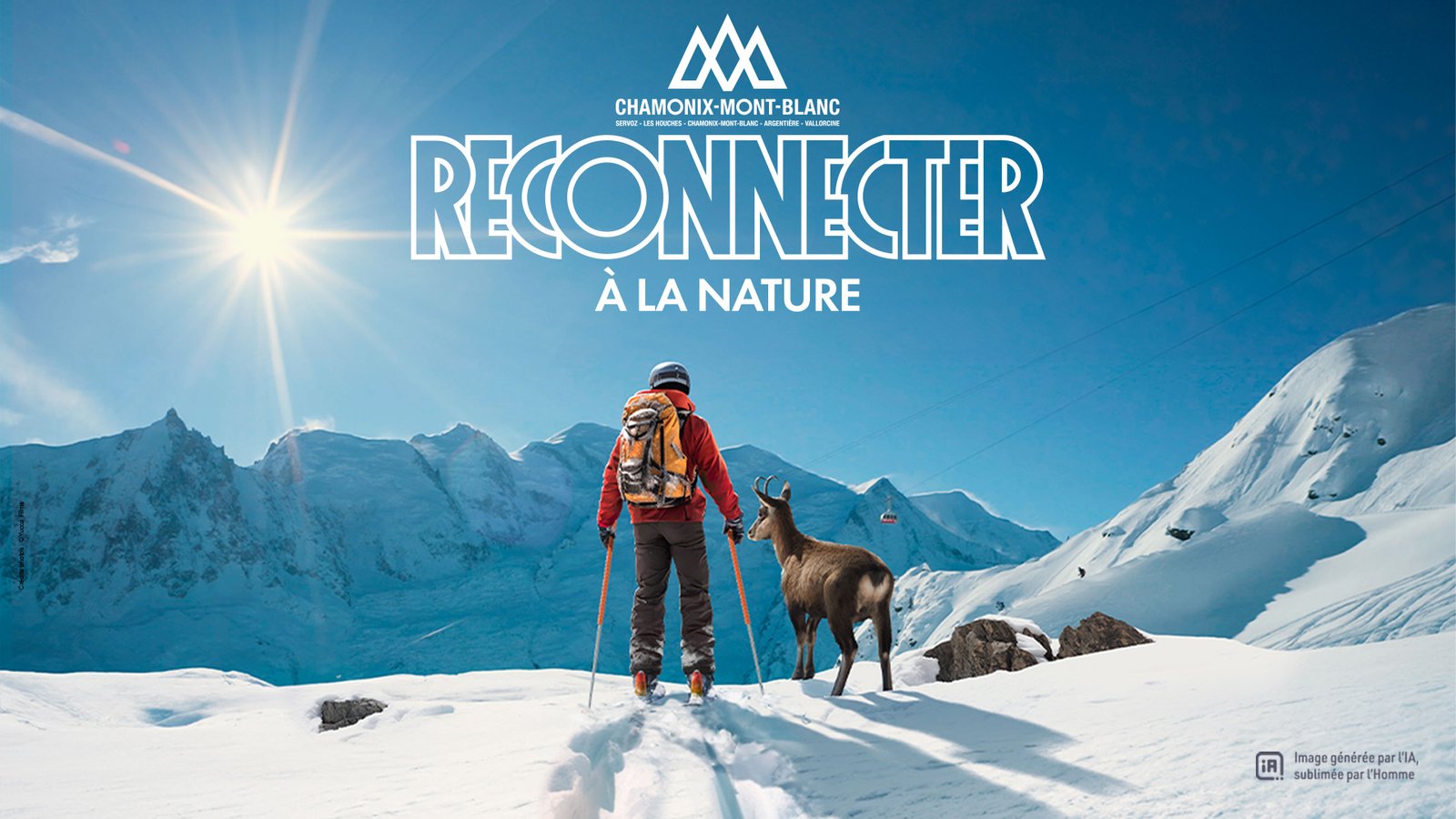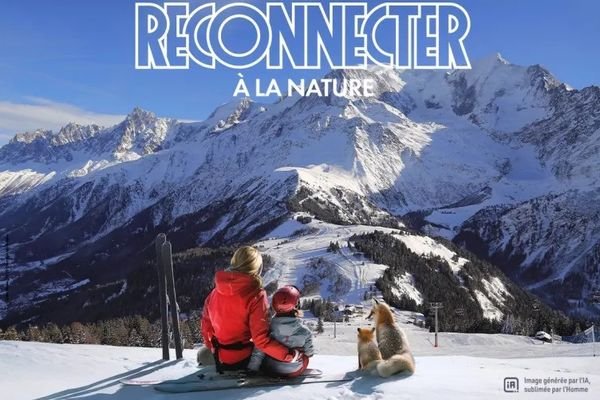La récente 2023-2024 advertising campaign of Chamonix-Mont-Blanc Tourism has garnered significant attention and sparked mixed reactions due to its use of artificial intelligence (AI) for creating part of the content. Opinions are divided between the merits and the limits of this technology in the field of communication.
Artificial intelligence at the heart of controversies
Among the four posters created for the promotion of Chamonix and its winter activities, some use a combination of real images and characters or animals generated by AI, such as MidJourney. The mention “image generated by AI, enhanced by humans” on these posters has fueled an intense debate between those who praise Chamonix-Mont-Blanc Tourism for its innovative and transparent approach and those who criticize this choice for various reasons. In a context where AI raises fears of job loss in traditionally creative fields such as photography and graphic design, some internet users have expressed their disagreement with the use of this technology. However, according to Nicolas Durochat, director of Chamonix-Mont-Blanc Tourism, it is not so much about “destroying” jobs as it is about working with professionals who know how to use AI wisely and make the most of it.
The choice of innovation in communication
OK.
So lazy to take a picture of a mountain in Chamonix for an ad about Chamonix. pic.twitter.com/FkMOD8B3Jz— Nicolas Deneschau (@Nicozilla_FR) November 17, 2023
The use of AI for the advertising campaign of Chamonix represents a bold step toward technological innovation. The surprising visuals, combining real landscapes and wild animals generated by AI, have a clear goal: to remind visitors of the close connection between humans and nature, as well as the necessity of preserving the fragile ecosystems in which these animals live. In reality, the images created with AI are always reworked by a team of professionals to refine their appearance and integration with traditional photographs. While some authors criticize this approach, others see it as a healthy and creative collaboration between humans and machines.

Return on investment: what assessment for the campaign?
Beyond the controversies and differing opinions, it is undeniable that the advertising campaign of Chamonix has managed to generate public interest, making headlines on social media and reaching a wide audience. With more than 850,000 views in just 24 hours, this viral effect helps enhance the region’s notoriety and encourages more people to explore it. Despite some negative reactions, Nicolas Durochat believes that the attention drawn to this campaign constitutes a form of free publicity for Chamonix-Mont-Blanc Tourism and that the generated buzz will largely outweigh any potential critiques.

And tomorrow: AI in advertising, a trend in the making?
Where some see a danger to traditional creative professions, others view this new approach as an opportunity to reinvent communication and push its boundaries. The Chamonix campaign could thus serve as a pioneering example for the future of tourist advertising, blending artificial intelligence and human intervention. It remains to be seen whether other players in the sector will be tempted by this emerging trend and whether AI will continue to carve out its place in advertising creation. In any case, the controversy generated by the Chamonix campaign shows that it is essential to find a balance between technological innovation and respect for the values and expectations of the public.






